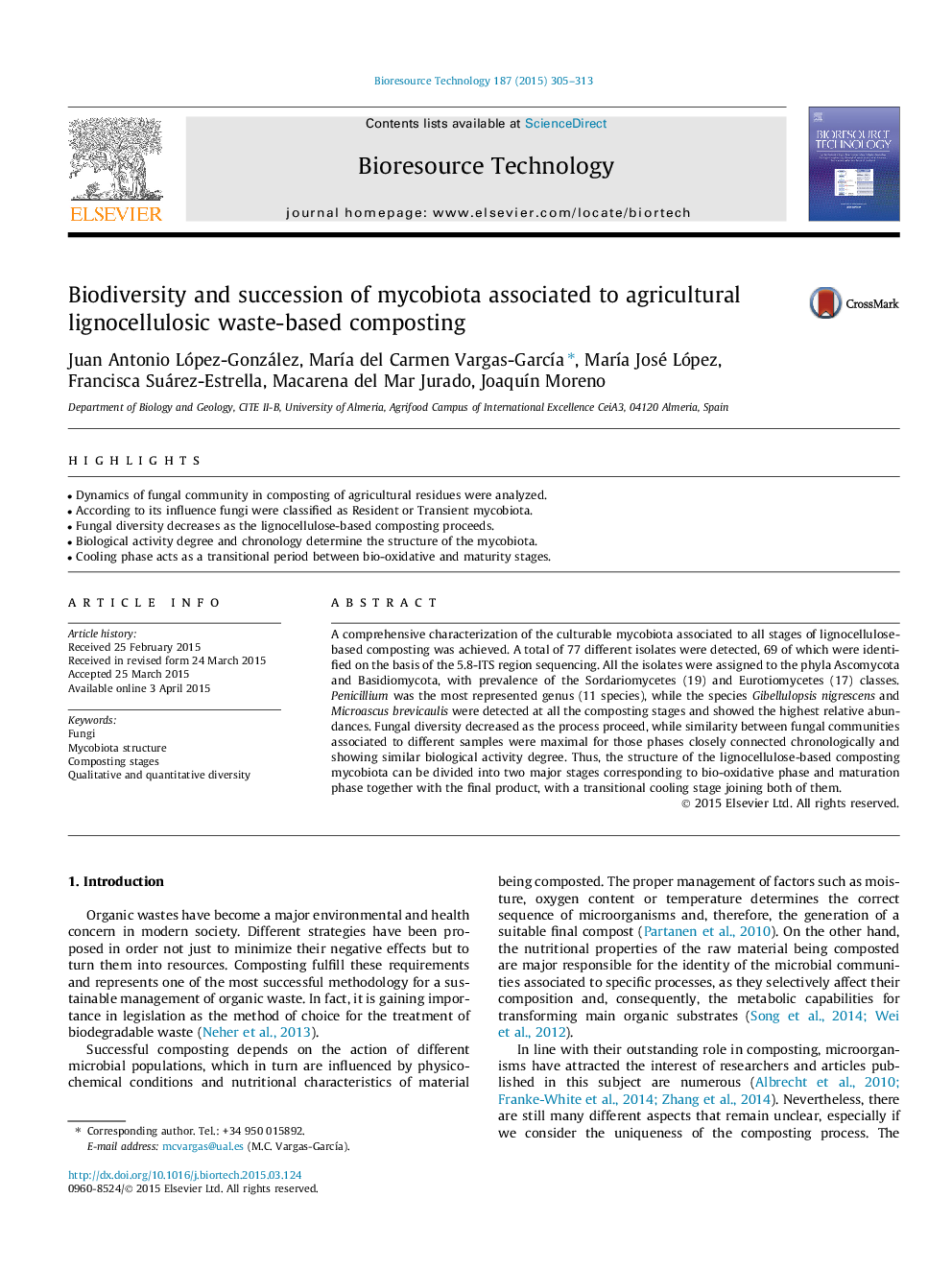| Article ID | Journal | Published Year | Pages | File Type |
|---|---|---|---|---|
| 7075086 | Bioresource Technology | 2015 | 9 Pages |
Abstract
A comprehensive characterization of the culturable mycobiota associated to all stages of lignocellulose-based composting was achieved. A total of 77 different isolates were detected, 69 of which were identified on the basis of the 5.8-ITS region sequencing. All the isolates were assigned to the phyla Ascomycota and Basidiomycota, with prevalence of the Sordariomycetes (19) and Eurotiomycetes (17) classes. Penicillium was the most represented genus (11 species), while the species Gibellulopsis nigrescens and Microascus brevicaulis were detected at all the composting stages and showed the highest relative abundances. Fungal diversity decreased as the process proceed, while similarity between fungal communities associated to different samples were maximal for those phases closely connected chronologically and showing similar biological activity degree. Thus, the structure of the lignocellulose-based composting mycobiota can be divided into two major stages corresponding to bio-oxidative phase and maturation phase together with the final product, with a transitional cooling stage joining both of them.
Keywords
Related Topics
Physical Sciences and Engineering
Chemical Engineering
Process Chemistry and Technology
Authors
Juan Antonio López-González, MarÃa del Carmen Vargas-GarcÃa, MarÃa José López, Francisca Suárez-Estrella, Macarena del Mar Jurado, JoaquÃn Moreno,
